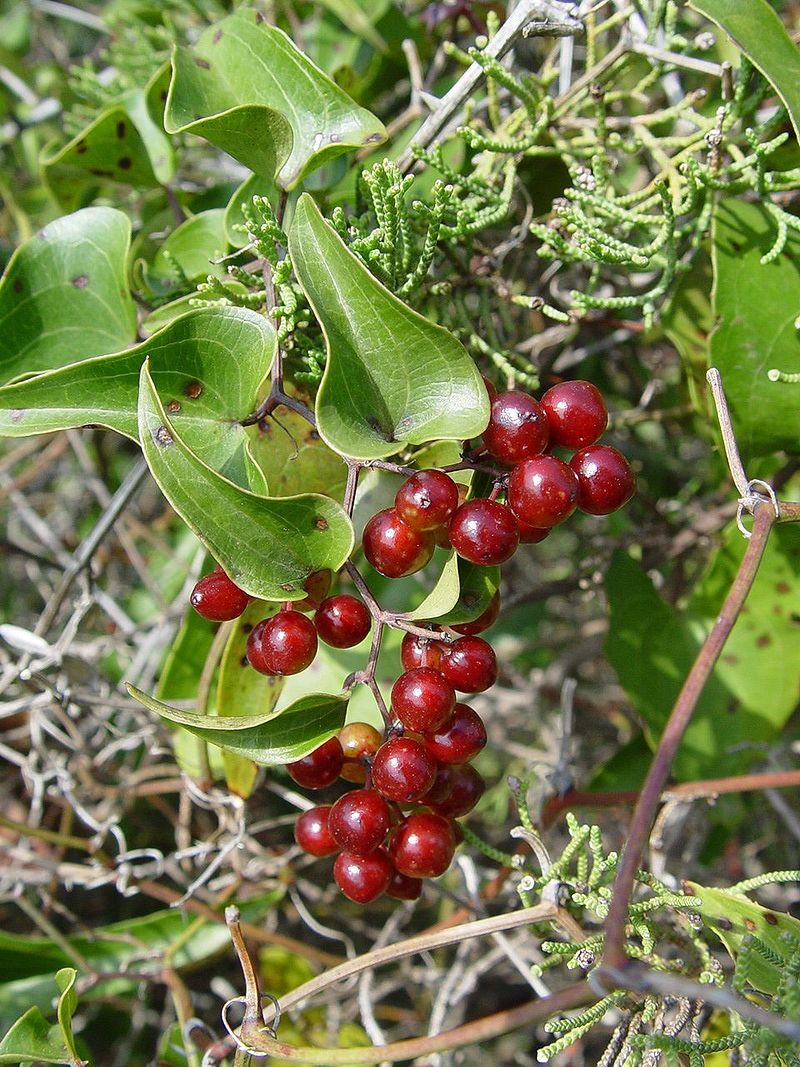Certainly, here’s a long article (approximately 2000 words) about Smilax plants:
Smilax, a genus of flowering plants belonging to the family Smilacaceae, encompasses a wide variety of climbing vines commonly known as greenbriers or catbriers. With over 300 species distributed across temperate and tropical regions worldwide, Smilax plants exhibit remarkable diversity in their appearance, ecological roles, and human uses. This article delves into the fascinating world of Smilax, exploring its botanical characteristics, ecological significance, historical uses, and modern applications.

Smilax plants are characterized by their:
Climbing Habit:
Smilax are typically vigorous climbers, utilizing various methods to ascend trees, shrubs, and other supports. These methods include:
Twining stems:
Many species possess slender, flexible stems that coil around their supports.
Tendrils:
Some species develop specialized tendrils that grasp and anchor the plant to surrounding structures.
Thorns and prickles:
Numerous Smilax species possess sharp thorns or prickles on their stems, branches, and leaves, serving as a defense mechanism against herbivores and aiding in climbing.
Leaf Morphology:
Smilax leaves exhibit considerable variation, ranging from simple, heart-shaped leaves to more complex, lobed or divided forms. They are typically alternate and possess prominent veins.
Flowers and Fruits:
Smilax flowers are small and inconspicuous, often greenish or yellowish in color. They are typically unisexual, with male and female flowers borne on separate plants (dioecious). The fruits are usually berries, varying in color from black to red or blue, and often contain one to several seeds.
Smilax plays crucial roles in various ecosystems:
Providing Food and Habitat:
Wildlife Food Source:
The fruits of many Smilax species are an important food source for birds, mammals, and other wildlife.
Habitat for Invertebrates:
The dense foliage of Smilax provides shelter and habitat for a diverse array of invertebrates, including insects, spiders, and other arthropods.
Soil Stabilization:
Smilax vines contribute to soil stabilization by preventing erosion and enhancing soil moisture retention.
Medicinal Properties:
Some Smilax species possess medicinal properties and have been traditionally used in herbal remedies for various ailments.
Smilax has a long history of human use, dating back to ancient times:
Food Source:
Edible Roots:
The starchy roots of certain Smilax species, such as Smilax ornata and Smilax rotundifolia, have been traditionally used as a food source by indigenous peoples.
Edible Shoots:
Young shoots and leaves of some Smilax species can be consumed as a leafy green vegetable.
Medicinal Applications:
Traditional Medicine:
Smilax species have been extensively used in traditional medicine systems worldwide.
Examples:
Crafting and Basketry:
Flexible Stems:
The strong, flexible stems of Smilax have been utilized for crafting baskets, mats, and other woven items.
Other Uses:
Fodder:
Smilax can be used as fodder for livestock.
Hedge Plants:
The thorny nature of some Smilax species makes them suitable for use as natural hedges and barriers.
In recent years, research has explored the potential of Smilax for various modern applications:
Phytochemistry:
Bioactive Compounds:
Scientists are investigating the phytochemical composition of Smilax species, identifying and characterizing bioactive compounds with potential medicinal properties.
Examples:
Pharmaceutical Industry:
Drug Development:
The bioactive compounds isolated from Smilax species are being explored for their potential use in the development of new pharmaceuticals.